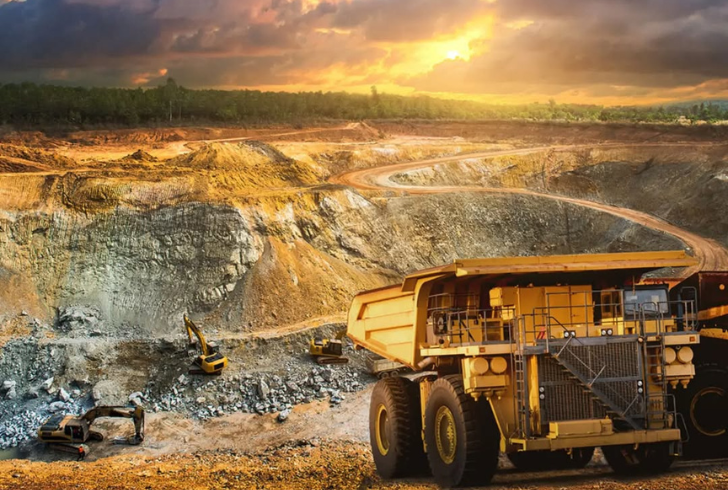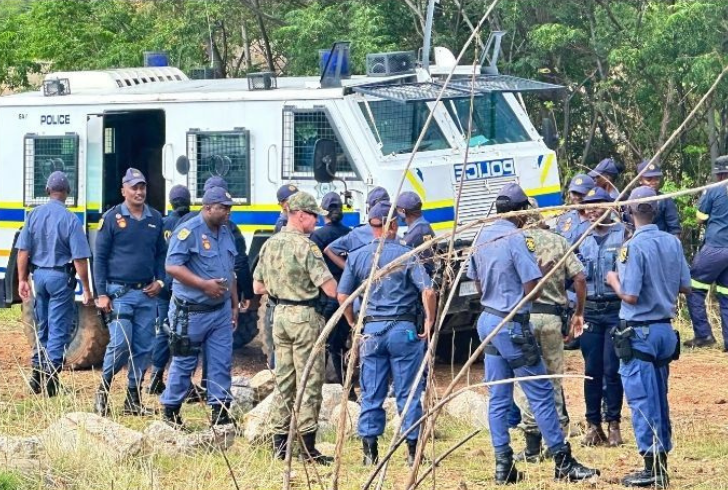
The Dark Side of South Africa Gold Mines – Gang Violence and Control

South African gold mines have long been a symbol of the country’s mineral wealth, but beneath the surface lies a dangerous world controlled by criminal gangs. In abandoned shafts and tunnels, illegal miners, known as “zama zamas,” operate in conditions that are as risky as they are profitable. These underground operations are at the center of a growing crisis that combines economic desperation, organized crime, and a government struggling to regain control. The deep ties between gang control and illegal mining are reshaping the narrative of South African gold mining.
The Rise of Illegal Mining in Abandoned Shafts

Instagram | upscalerts | Illegal mining grows in South Africa.
Over 6,000 abandoned mines across South Africa have become hubs for illegal mining activities. These mines, unprofitable for large corporations, have turned into gold-rich opportunities for small-scale miners. However, the lure of high profits comes with severe dangers. Many former legal miners, laid off due to industry decline, have turned to illegal operations as a means of survival. With unemployment soaring above 30%, the appeal of quick cash outweighs the perilous working conditions underground.
Gangs have capitalized on this desperation. They recruit miners, enforce control over territories, and take a cut of the profits. In some cases, miners must pay “protection fees” to avoid violence or robbery by rival gangs. These fees buy a measure of safety, but they also underscore the mafia-like control these groups wield over illegal mining operations.
A World of Risk and Reward
For miners like Ndumiso, a 52-year-old veteran of the illegal mining world, life underground is both a lifeline and a sentence. Spending up to three months at a time in disused mine shafts, these workers endure grueling conditions. Ndumiso recalls sleeping on sandbags after exhausting shifts, while constantly aware of the life-threatening risks around him. Rockfalls, rival gang violence, and toxic chemicals are ever-present dangers. Some tunnels even contain makeshift cemeteries where the bodies of miners who didn’t survive are left behind—grimly referred to as “zama zama graveyards.”
Despite the risks, the financial rewards are significant. Many zama zamas earn far more than they ever did in legal mining jobs. Ndumiso, for instance, receives about $1,100 every two weeks from his gang leader, with additional income from selling small amounts of gold on the black market. This allows him to provide for his family, pay school fees for his children, and build a better life. However, this success comes at the cost of personal safety and health, as prolonged periods underground take a physical and emotional toll.
A Makeshift Economy Below the Surface
Illegal gold mines are more than just work sites—they’ve evolved into fully functioning underground communities. Markets, red-light districts, and supply chains for essentials like food, batteries, and mining tools have developed over time. Gangs facilitate this underground economy, controlling access and inflating prices. For miners, this creates additional pressure to bring in enough gold to afford basic necessities. The underground “towns” mirror life above ground, but with a far more dangerous backdrop.
The Role of Gangs in South African Gold Mines
Organized crime syndicates play a central role in controlling illegal mining activities. These gangs recruit workers, manage underground territories, and ensure the gold they extract reaches lucrative black markets. Many miners, including Ndumiso, are required to pay protection fees, while others work under coercion or as part of forced labor schemes. Violence is common, with rival gangs competing for dominance in the most gold-rich tunnels.
According to experts, miners are often armed with pistols, shotguns, or semi-automatic weapons to defend themselves. However, the gangs that control these operations possess far more firepower. Lesotho-based gangs, in particular, are notorious for their heavily armed groups, making them a constant threat to local miners.
Government officials have described these mines as “crime scenes” that contribute to a broader network of organized crime. The illegal mining trade not only exploits desperate workers but also fuels corruption, violence, and environmental degradation across the region.
Government Crackdowns and the Legal Impasse

Instagram | bbcafrica | South Africa’s crackdown on illegal mining struggles.
South Africa’s government has launched several crackdowns to curb illegal mining. Recently, a high-profile standoff in Stilfontein brought the issue to global attention. Authorities blocked food and water supplies to underground miners in an attempt to force them out. This move sparked legal challenges, with advocacy groups demanding humane treatment for the miners. A court ruling temporarily allowed essential supplies to be delivered, highlighting the complexity of addressing illegal mining while protecting human rights.
Critics argue that the government’s approach targets vulnerable miners while ignoring the criminal kingpins who profit the most. Many of these individuals live in affluent neighborhoods, far removed from the dangerous conditions of the mines. Experts suggest that decriminalizing and regulating small-scale mining operations could be a more effective way to address the issue, providing economic opportunities while curbing gang control.
The Broader Impact on Communities and the Economy
Illegal mining extends its effects far beyond the miners themselves. Mining communities face high levels of crime, including theft, assaults, and infrastructure damage caused by the operations. The use of hazardous chemicals like mercury and cyanide also poses serious environmental risks, contaminating soil and water supplies.
Economically, illegal mining drains billions of rands from South Africa’s economy each year. Lost export income, unpaid royalties, and uncollected taxes contribute to a significant financial burden. President Cyril Ramaphosa has emphasized the need for mining companies to rehabilitate abandoned mines, but progress remains slow.
What Lies Ahead for South African Gold Mines?
The future of South African gold mines hangs in a precarious balance. On one hand, the zama zamas represent a desperate response to economic hardship, offering a lifeline for thousands of unemployed workers. On the other hand, their operations perpetuate violence, environmental damage, and the growth of organized crime.
Efforts to address this issue must strike a careful balance between enforcement and reform. Policies that regulate small-scale mining could provide a pathway to economic stability for miners while weakening the grip of criminal syndicates. Without decisive action, however, the cycle of exploitation and danger will likely continue.
More in Investments & Savings
-
`
How to Align ESG Goals With Your Business Strategy
In today’s corporate landscape, aligning a corporate foundation’s ESG goals with the core strategies of a business has become increasingly crucial....
October 3, 2024 -
`
Vale Ventures to Invest in Mantle, A Startup for Carbon Capturing
In a bold move towards a greener future, Vale Ventures has made headlines by announcing an investment in the Boston-based startup...
September 25, 2024 -
`
Is Selena Gomez a Billionaire?
Recently, rumors of Selena Gomez’s billionaire status, fueled by her ever-expanding business ventures and skyrocketing influence, have gained traction. Gomez, who first...
September 18, 2024 -
`
New ‘Medicare Card’ Scam Is On the Rise – Here’s What You Should Do
Have you recently received a call asking you to verify your Medicare number to get a new card? If so, be...
September 13, 2024 -
`
What Is a Stock Split? Understanding How It Works
Stock splits are a fascinating aspect of the financial world that often pique investors’ curiosity. When a company announces a stock...
September 6, 2024 -
`
Cardi B No Makeup: Proof That She’s a Natural Beauty Queen
Cardi B is known for her bold and extravagant style, often capturing attention with her vibrant fashion choices and daring beauty...
August 31, 2024 -
`
How Long Has Forbes Been in Business? – And What Lies Ahead
For over a century, Forbes has been a pillar of business journalism and financial reporting. Since its inception in 1917, Forbes...
August 21, 2024 -
`
Are House Prices Going Down in Orange County in 2024?
In June 2024, Orange County saw a notable shift in its real estate landscape. This leads many to wonder if house...
August 14, 2024 -
`
What Are Specified Investment Products? SIPs Explained
Navigating the world of investing can be complex, especially when it comes to Specified Investment Products (SIPs). These financial instruments often...
August 7, 2024














You must be logged in to post a comment Login